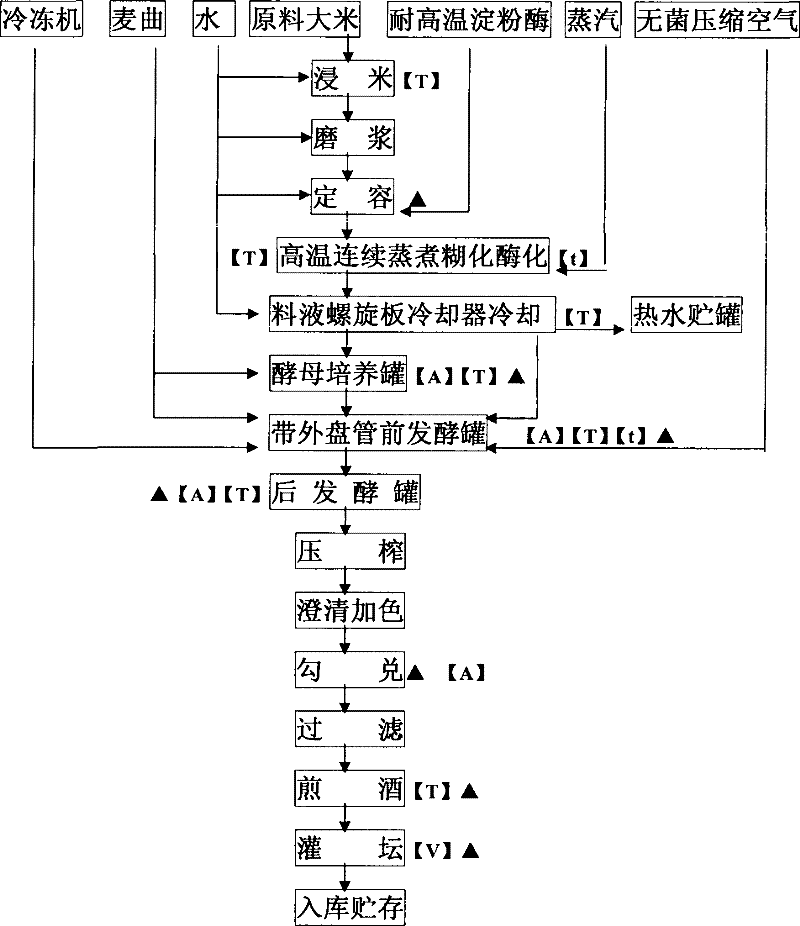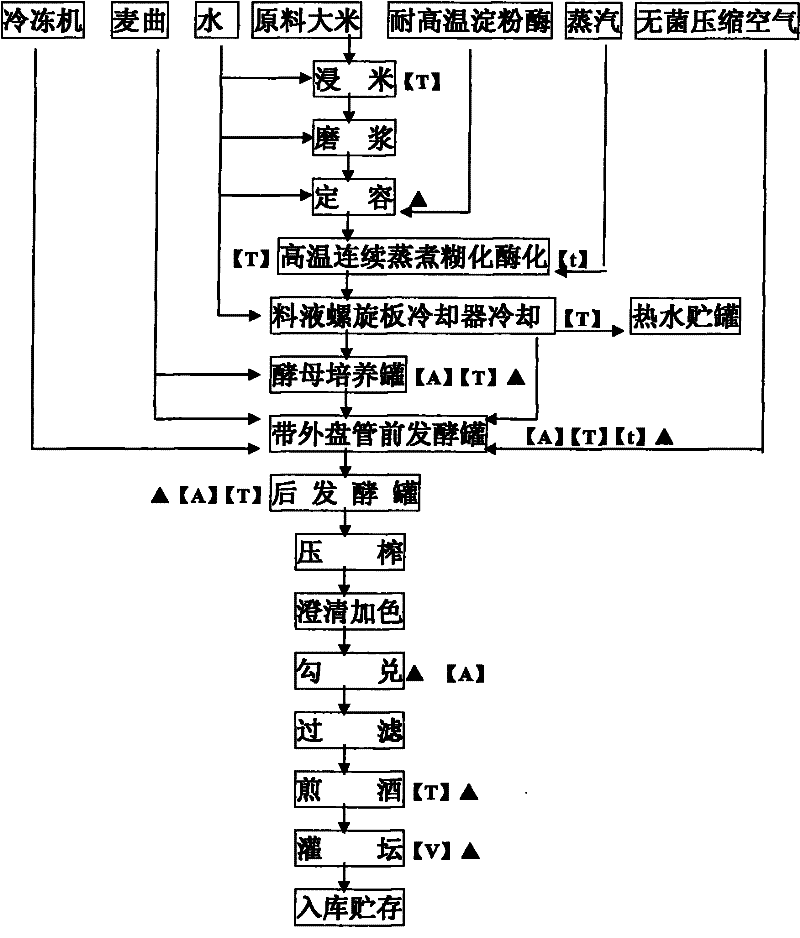Technology of making yellow wine by grinding and pulping rice raw material and performing high-temperature continuous steaming
A rice and pulp refining technology, which is applied in the preparation of alcoholic beverages, methods based on microorganisms, biochemical equipment and methods, etc., can solve the problems of large man-hour requirements, high labor intensity, and large steam loss, and achieve easy pipeline transportation , High degree of mechanization, energy saving effect
- Summary
- Abstract
- Description
- Claims
- Application Information
AI Technical Summary
Problems solved by technology
Method used
Image
Examples
Embodiment Construction
[0031] Below in conjunction with accompanying drawing and embodiment the present invention will be further described:
[0032] As shown in the figure, this process of crushing and refining raw rice and using high-temperature continuous cooking to brew rice wine specifically includes the following steps:
[0033] (1) Rice crushing and refining continuous cooking gelatinization enzymatic process
[0034] (1), constant volume: Soak the rice in water for 3 hours, grind the slurry water with a grinding wheel, add water according to the mass ratio of rice (dry): water = 1:2, and reach the specified scale of the constant volume tank, press 0.4 to 0.6 Add high-temperature-resistant amylase at a ratio of kg / (ton of dry rice input); stir evenly; the temperature range of amylase is 95--110°C.
[0035] (2) Through the steam material mixer and the maintenance pipeline, carry out high-temperature continuous cooking, gelatinization and enzymatic conversion: the temperature is 102-107 ° C, a...
PUM
 Login to View More
Login to View More Abstract
Description
Claims
Application Information
 Login to View More
Login to View More - R&D
- Intellectual Property
- Life Sciences
- Materials
- Tech Scout
- Unparalleled Data Quality
- Higher Quality Content
- 60% Fewer Hallucinations
Browse by: Latest US Patents, China's latest patents, Technical Efficacy Thesaurus, Application Domain, Technology Topic, Popular Technical Reports.
© 2025 PatSnap. All rights reserved.Legal|Privacy policy|Modern Slavery Act Transparency Statement|Sitemap|About US| Contact US: help@patsnap.com


